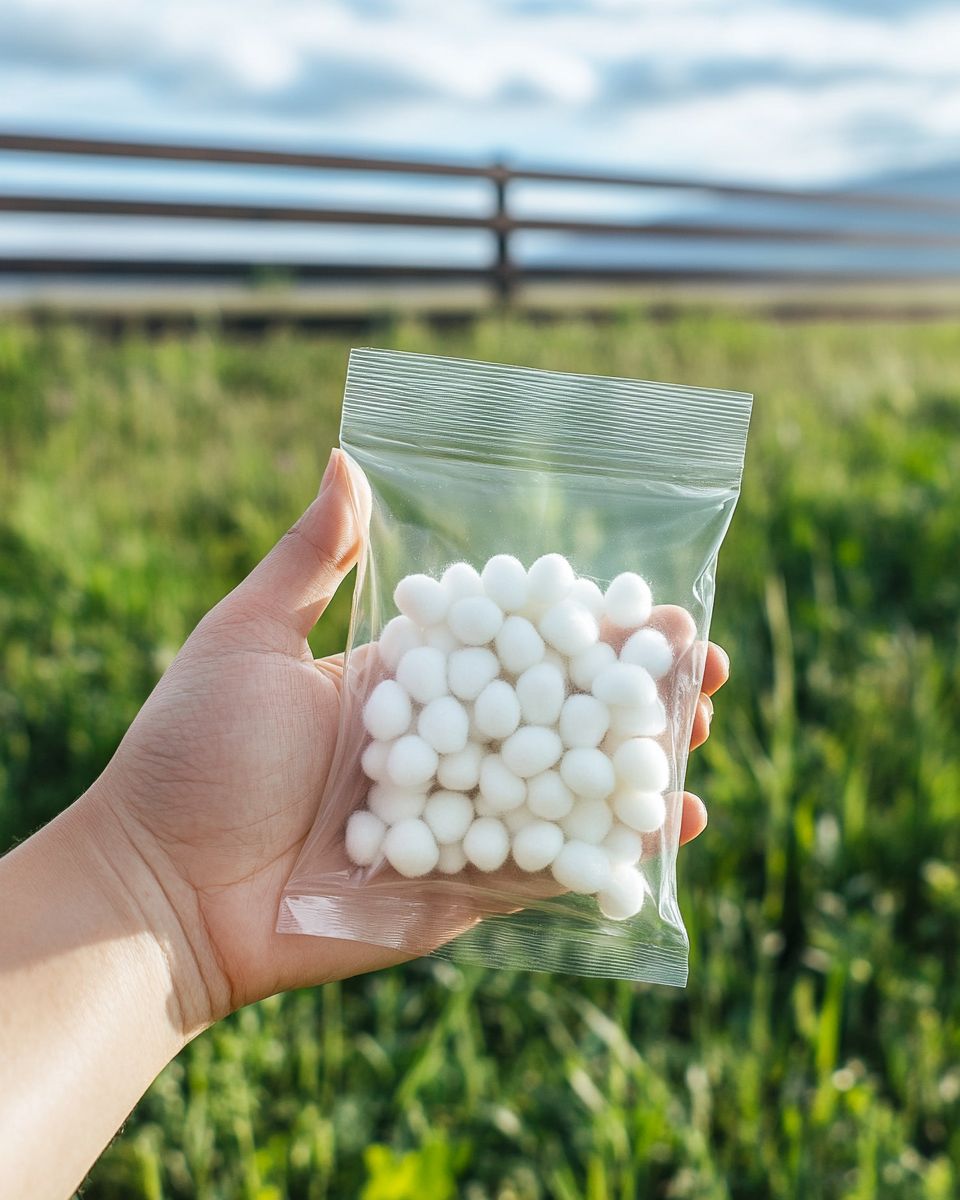ADVERTISEMENT
What Is That Little Bag Filled with White Fluffy Balls? Here’s What You Need to Know
If you’ve ever found a little bag filled with white fluffy balls on your driveway or in a public area, you may have found yourself wondering, What is this, and where did it come from? While it might seem like a mystery at first, rest assured that there are several possible explanations for this curious discovery.
In this article, we’ll explore what these little bags might be, how they could end up on your driveway, and what you should do if you come across one.
The Likely Culprits
- Cotton Boll or Cotton Flower
One of the most common explanations for white fluffy balls is cotton. Cotton plants produce these small, fluffy balls called “bolls” that are part of the cotton harvesting process. When cotton is harvested, the cotton bolls are often broken apart, and the fluff can be collected in bags.
If you’ve found a bag of cotton balls or pieces of cotton, it may have been accidentally dropped by someone handling cotton goods. These fluffy little bundles could be part of someone’s personal crafting supplies or even a bag of raw cotton fibers, which can be used for various purposes, including quilting, stuffing, or creating cotton-based products.
- Dandelion Seeds or Other Seed Pods
Another possibility is that the fluffy balls you found are actually dandelion seeds or the seeds from other plants that are dispersed through the air by the wind. Dandelions, in particular, produce lightweight seeds that are easily blown away and may land in different places. If the bag was dropped near a patch of dandelions or other seed-bearing plants, it’s possible that these seeds were gathered up and dropped in the bag.
- Stuffing Material from Pillows or Cushions
If the fluffy balls are made from synthetic fibers or down feathers, they could be stuffing from pillows, cushions, or soft toys. These materials are commonly used for filling comfort products. If someone was carrying around a pillow, stuffed animal, or cushion, it’s possible that the bag tore open, spilling the stuffing onto the driveway.
- Packaging Material
In some cases, the fluffy white balls may be part of a packaging material used for shipping or protecting delicate items. Packaging peanuts, for example, are often made from foam and can look like small, fluffy balls. If the bag was part of a delivery or shipping mishap, it’s possible that the material was unintentionally dropped or left behind.
- Bird Nesting Materials
Birds often collect soft materials such as cotton, feathers, and even yarn to line their nests. If the bag of fluffy balls you found is close to a tree or shrub, it might have fallen from a bird’s nest. These materials can be collected over time and might end up scattered outside.
- Artificial Snow or Crafting Material
If it’s around the holiday season, the fluffy balls could be a form of artificial snow or decorative material used for crafting. Many people use fake snow, cotton batting, or synthetic materials to create holiday decorations or winter-themed displays. It’s possible that someone working on a holiday project lost their materials, leaving the bag behind.
What Should You Do With the Bag?
So, you’ve found this little bag of fluffy balls, but what should you do next? Here are some suggestions for handling the situation:
- Check for Clues
If you feel comfortable doing so, check the bag for any markings, labels, or information that could provide a clue as to its origin. For example, if there’s a logo, brand name, or address, this could give you a better idea of who the bag belongs to.
- Dispose of It Properly
If there’s no identifying information and you’re unsure what the fluffy balls are, it’s best to dispose of the bag safely. Make sure to seal the bag and place it in the trash to avoid any potential mess or confusion. If you suspect that the material could be harmful, especially if it’s
